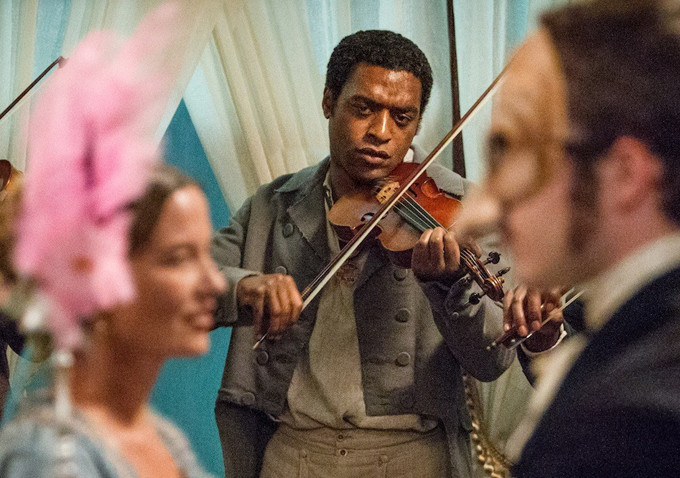By the Landlord
“The violinist is that peculiarly human phenomenon distilled to a rare potency - half tiger, half poet.” – Yehudi Menuhin
“A table, a chair, a bowl of fruit and a violin; what else does a man need to be happy?” – Albert Einstein
“Life is like playing a violin solo in public and learning the instrument as one goes on.” – Samuel Butler
It can snivel, it can wine, grate, slice, tear and be shrill. It can weep, slide into laughter, or pluck pizzicato with infinitely complex playfulness. It can soar and sing like a bird, then meander into a warm, slow glow. It can capture simmering suspense and rhythmic horror, then escape into exultant release. Visceral, vocal, and corporeal, few instruments can express a range of emotions and atmosphere quite like the violin, and this week, learned readers, it’s time for us to explore songs and music in which this sexiest and most emotive of instruments plays a key or prominent role.
And this could not only come up in the playing but also where appropriate, when also mentioned subject matter, perhaps title or lyrics, covering a whole range of genres, from classical to folk, pop to rock, film scores to traditional to contemporary across any variety of cultures and countries.
The word violin, first used in English in 1570s, and fiddle in the 14th century, coming through various routes via the Italian violino, and variously Old English fiðele, related to Old Norse fiðla, as well as fedele, fydyll, fidel, all likely stem from the Latin word Vitula, the Roman goddess of joy, with the word meaning to exult or be joyful.
So then, as the Bar opens with no shortage of joy or exultation, the place is piled up high with violin cases and that unmistakable sound of tuning those four strings to G, D, A and E. We have a veritable string (for that is the collective noun) of violinists here to fiddle about, plucking at their heartstrings and eager to talk about this instrument and what it means. And some models are rather unusual:
Violin stars, or star violins?
We’ve already heard from the great Yehudi Menuhin, but now he expands on his point, placing the violinist in the context of history and politics: “The violinist must possess the poet's gift of piercing the protective hide which grows on propagandists, stockbrokers and slave traders, to penetrate the deeper truth which lies within.” This seems to make sense to me. Violinists and making money rarely go together (my dad was one, so I can confirm this). But to at a more extreme level, the violinist can represent a voice against repression, as portrayed in the powerful film 12 Years A Slave, in which free man and musician Solomon Northrop is the skilled artist reduced to playing jigs for his captors.
Playing out hidden feelings: Solomon Northrop portrayed in 12 Years A Slave.
The violin seems to have a particularly strong ability express the inexpressible, and it often comes across as a very defiant, human voice when played solo, and powerful in chorus when played in a group. As one of the best contemporary players puts it, Joshua Bell, “when you play a violin piece, you are a storyteller”, and “the violin sings”.
First violin, or second violin? The first violin is the leader of the orchestra, second only to the conductor, and it’s an interesting contrast that while in so many cultures the violinist plays a community role, in strict classical terms they are at the top of a class hierarchy. “If we were all determined to play the first violin we should never have an ensemble. therefore, respect every musician in his proper place,” said Robert Schumann, sternly.
The instrument may be associated primarily with classical music in more recent times but for many cultures, but it really comes from the poor, from villages, from folk dances, from the culture of travellers, gypsies, and community storytelling. Here’s Alison Krauss to tell us more about it: “You know, if you really want to fiddle the old-time way, you've got to learn the dance. The contra-dances, hoedowns. It's all in the rhythm of the bow. The great North Carolina fiddle player Tommy Jarrell said, 'If a feller can't bow, he'll never make a fiddler. He might make a violin player, but he'll never make no fiddler.’"
So let’s dance. There will no doubt be many an American example nominated this week, but let’s dip into an eastern European example, with Csárdás or Czárdás, a traditional Hungarian folk dance, presented in a traditional concert, and played by Josef Szalai:
Think violin is a posh instrument? Let’s listen to the same piece played by an old, impoverished street player. It’s impossible to not feel moved by this beautiful, and rather unusual style of playing:
And for emotional, but also brilliantly fast fiddling, you can’t do much better than Taraf De Haïdouks from Clejani, Romania:
Over the past 50 years or more, the violin was to a great extent has been usurped by the guitar, but for centuries it was the instrument, the one Elvis, Bob Dylan Jimi Hendrix would likely have picked up had they been in another time, and many current musicians may have started on as children. Italy’s Niccolò Paganini (1782-1840) is perhaps regarded as the greatest of all virtuosos, the true rock star of his day, so charismatic, of such genius and all-conquering sex appeal, that when he died in 1840, there was much controversy over his burial. In Genoa, the Catholic church, and many others, reckoned he had bartered his soul with devil to gain such skill (perhaps equivalent to the guitar’s Robert Johnson at the crossroads) so refused him a grave, and he wasn’t properly laid to rest until 1876 in Parma.
As Paganini himself admitted: “I am not handsome, but when women hear me play, they come crawling to my feet.” And he also explained this devil comparison: “At Vienna, one of the audience affirmed publicly that my performance was not surprising, for he had distinctly seen, while I was playing my variations, the devil at my elbow, directing my arm and guiding my bow. My resemblance to the devil was a proof of my origin.”
We can’t see or hear this devil’s work unfortunately, but he not only inspired many composers to write work for the instrument, but wrote many himself, with a technique no others could touch. But here’s a pretty impressive rendition of it by Alexander Markov. Listen out for the extraordinary one-handed pizzicato section in the middle:
“Violin playing is a physical art with great traditions behind it.” Vanessa Mae. That’s right. And it’s even harder than skiing, and you can’t cheat on the violin. And here’s Aston Villa fan Nigel Kennedy, stressing the importance of technique, much of which he learned from Menuhin. “ If you're not pushing your own technique to its own limits with the risk that it might just crumble at any moment, then you're not really doing your job.” Kennedy, who has an unusual persona in the world of classical music, has forged a career across other genres too: “I’ve learnt new scales through playing different types of music, like Indian raga scales, gipsy scales and harmonically-based jazz scales.”
The violin is definitely a difficult instrument. “If you put your hand on the piano, you play a note. It's in tune. But if you put it on the violin, maybe it is, maybe it isn't. You have to figure it out,” says Itzhak Perlman.
But it is also unmistakably beautiful, sensual in shape, texture and sound, as bow slides across string: “Some people relate it as the shape of a lady, but, whether you like it or not, it's been so for more than 400 years, unlike modern stuff that easily looks dated. But I think it's very personal and unique that, although each violin looks pretty similar, that no two violins sound the same.” says Sirena Huang.
Maple, spruce, ebony, boxwood, willow or rosewood, the greatest and most expensive violins come from the Italian makers of the mid-17th to early 18th centuries, the Stradivari family, Amati, Guarneri, Gagliano and more. But why are they so enduring? It is not merely the culture of exemplary, painstaking craftmanship, but perhaps it is something to do with the wood that happened to be available. Some have theorised that it came from trees repressed from particularly harsh winters in the mid 17th century, resulting in a quality so strong and resonant it helped created extraordinary sound. Mind you, there's also this strange, 2-string, 3D printed model. Stradivari and family might not approve:
3D printed violin. with two "strings".
It’s time to hand over to you now, but here’s a couple pieces to wet your appetite. First a selection of Irish folk tunes:
And finally, as it’s coming up the anniversary of my dad’s passing, a piece that was played at his funeral, and one that soars so appropriately and beautifully, it’s hard not shed a tear. The Lark Ascending:
So then, returning to the guru chair after a previous adventure into songs about lust from a massive response, we welcome back the wonderful conductor amylee to take up the Song Bar baton and orchestrate your nominations into beautifully played playlists. Deadline? This coming Monday – last orders are at 11pm UK time, for lists published on Wednesday. I now bow to your collective wisdom.
New to comment? It is quick and easy. You just need to login to Disqus once. All is explained in About/FAQs ...
Fancy a turn behind the pumps at The Song Bar? Care to choose a playlist from songs nominated and write something about it? Then feel free to contact The Song Bar here, or try the usual email address.




